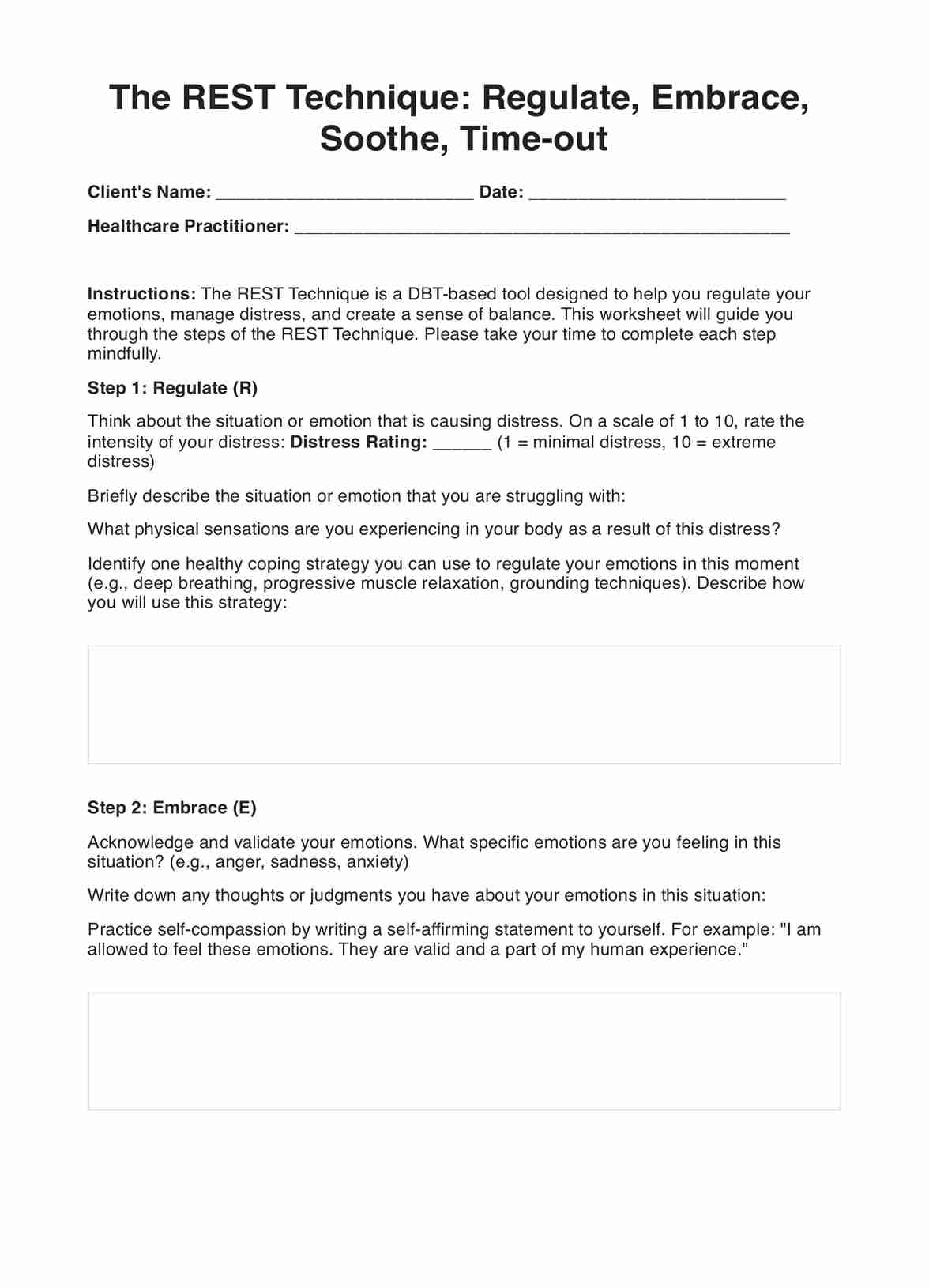The worksheet is designed for anyone looking to enhance their distress tolerance and emotional regulation skills. It can be used by individuals seeking self-help, clients in therapy, and healthcare professionals as a therapeutic tool.

The Rest Technique DBT Worksheet
Enhance emotional resilience with The Rest Technique DBT Worksheet for healthcare. Regulate, embrace, soothe, and find calm in distress.
The Rest Technique DBT Worksheet Template
Commonly asked questions
The primary purpose is to help individuals manage distress and intense emotions more effectively. It provides a structured approach to regulate emotions, embrace them without judgment, engage in soothing activities, and recognize when a time-out is needed.
The frequency of use can vary depending on individual needs. It can be used as often as needed, especially during distressing situations. Some individuals may use it daily for regular emotional regulation practice.
EHR and practice management software
Get started for free
*No credit card required
Free
$0/usd
Unlimited clients
Telehealth
1GB of storage
Client portal text
Automated billing and online payments











